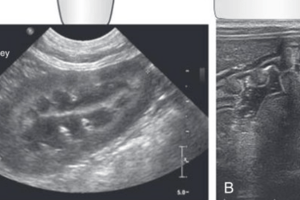Podcast
Questions and Answers
What happens to the observed frequency when the source and observer are moving towards each other?
What happens to the observed frequency when the source and observer are moving towards each other?
- Observed frequency is greater than the source frequency (correct)
- Observed frequency is equal to the source frequency
- Observed frequency is less than the source frequency
- Observed frequency becomes zero
In which direction do the observed frequency and source frequency relate when the source and observer are moving away from each other?
In which direction do the observed frequency and source frequency relate when the source and observer are moving away from each other?
- Observed frequency is less than the source frequency (correct)
- Observed frequency is equal to the source frequency
- Observed frequency is greater than the source frequency
- Observed frequency becomes zero
How does the Doppler effect help in measuring the velocity of moving objects?
How does the Doppler effect help in measuring the velocity of moving objects?
- By changing the pitch of sound waves
- By affecting the frequency of sound waves (correct)
- By manipulating the wavelength of sound waves
- By altering the speed of sound
What is a common example of the Doppler effect in everyday life mentioned in the text?
What is a common example of the Doppler effect in everyday life mentioned in the text?
How does understanding the Doppler effect contribute to a deeper appreciation of sound waves according to the text?
How does understanding the Doppler effect contribute to a deeper appreciation of sound waves according to the text?
Flashcards are hidden until you start studying
Study Notes
Exploring the Doppler Effect with Sound Waves
Imagine listening to a fire engine's siren as it speedily races by you. As the ambulance passes, the sound you hear changes — the pitch increases. This phenomenon, known as the Doppler effect, is a fascinating and fundamental concept in the study of sound waves and their behavior in motion.
Understanding the Doppler Effect
The Doppler effect, first described by Austrian physicist Christian Doppler in 1842, is the change in frequency and wavelength of a wave due to the relative motion between the source of the wave and the observer. In the case of sound, we can visualize this as a change in pitch and tone when a sound source moves toward or away from us.
When a source of sound (such as a train whistle or a musical instrument) is moving towards an observer, the observer hears a higher frequency than the original sound; conversely, a moving source away from the observer results in a lower frequency.
The Doppler Effect Formula
The Doppler effect can be mathematically described by the following equation:
[f_{obs} = f_{src} \cdot \frac{v_{obs} + v_{src}}{|v_{src} - v_{obs}|}]
In this equation:
- (f_{obs}) is the frequency of the sound wave as heard by the observer.
- (f_{src}) is the original frequency of the sound source.
- (v_{obs}) is the velocity of the observer.
- (v_{src}) is the velocity of the sound source.
When the source and observer are moving towards each other ((v_{src} > 0) and (v_{obs} > 0)), the observed frequency ((f_{obs})) is greater than the source frequency ((f_{src})). When the source and observer are moving away from each other ((v_{src} < 0) and (v_{obs} < 0)), the observed frequency is less than the source frequency.
The Doppler Effect and Sound Waves
The Doppler effect can be used to determine the relative velocity of sound sources, such as in the field of radar where it is used to measure the velocity of moving objects. It also plays a crucial role in understanding a range of phenomena, from auditory illusions to the measurement of ambulance speeds.
In the field of acoustics, the Doppler effect is essential for understanding how sound waves interact with moving objects and how these interactions can be used to analyze and model sound sources, such as cars and animals.
Doppler Effect in Everyday Life
You can observe the Doppler effect in everyday life, such as in the changing tone of a passing car's horn: as it approaches you, the pitch increases, while it decreases as it moves away from you. The Doppler effect is also observable in various natural phenomena, such as the change in frequency of a bird's call as it flies towards or away from you.
In summary, the Doppler effect is a fascinating concept that allows us to understand how sound waves are affected by motion, offering insights into a range of applications from acoustics to radar, and even the natural world. Understanding the Doppler effect leads us to a deeper appreciation of the complex and intriguing behavior of sound waves.
Studying That Suits You
Use AI to generate personalized quizzes and flashcards to suit your learning preferences.




